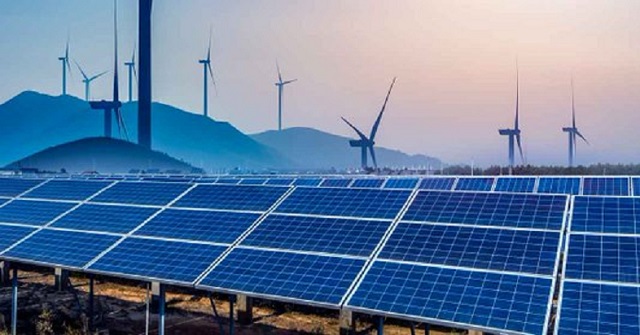
Kampala, Uganda | THE IDEPENDENT | The United Nations Conference on Trade and Development (UNCTAD) says developing countries need urgent support to enable them to attract more investment for their transition to clean energy.
UNCTAD’s World Investment Report 2023 published this week shows that much of the growth in international investment in renewable energy, which has nearly tripled since the adoption of the Paris Agreement in 2015, has been concentrated in developed countries.
According to the report, developing countries need renewable energy investments of about $1.7 trillion annually but attracted foreign direct investment in clean energy worth only $544 billion in 2022.
The report found that Total funding needs for the energy transition in developing countries are much larger and include investment in power grids, transmission lines, storage, and energy efficiency.
UNCTAD Secretary-General Rebeca Grynspan said a significant increase in investment in sustainable energy systems in developing countries is crucial for the world to reach climate goals by 2030. Compact for sustainable energy investment.
The report proposes a compact setting out priority actions ranging from financing mechanisms to investment policies to enable developing countries to attract investments to build sustainable energy systems.
On financing, the report calls for the de-risking of energy transition investment in developing countries through loans, guarantees, insurance instruments, and equity participation of both the public sector – through public-private partnerships and blended finance – and multilateral development banks.
Also, partnerships between international investors, the public sector, and multilateral financial institutions can significantly reduce the cost of capital for clean energy investment in developing countries.
UNCTAD also emphasizes the need for debt relief to offer developing countries fiscal space to make the investments necessary for the clean energy transition and to help them attract international private investment by lowering country risk ratings.
The report also finds that energy companies among the top 100 multinationals are divesting fossil fuel assets at a rate of about $15 billion per year.
But a key concern is that private (non-listed) buyers, who include mostly private equity funds, often have lower or no emission-reduction goals and weaker climate reporting standards.
That, according to the report calls for a new model of climate-aligned deal-making.
$4 trillion annual investment gap for global goals
The report says the investment gap across all sectors of the Sustainable Development Goals (SDGs) has increased to more than $4 trillion per year from $2.5 trillion in 2015. The largest gaps are in energy, water and transport infrastructure. The increase is the result of both underinvestment and additional needs.
The growing SDG investment gap in developing countries contrasts with positive sustainability trends in global capital markets. The value of the sustainable finance market reached $5.8 trillion in 2022.
Global investment flows fall due to overlapping crises
Global foreign direct investment (FDI) declined by 12% in 2022, to $1.3 trillion, after a strong rebound in 2021 following the steep drop induced by COVID-19 in 2020, the report shows. The decline was mainly a result of lower volumes of financial flows and transactions in developed countries.
The slowdown was driven by overlapping crises: the war in Ukraine, high food and energy prices and debt pressures.
The fall in FDI flows was mostly caused by financial transactions of multinational enterprises in developed economies, where FDI fell by 37% to $378 billion.
The global environment for international business and cross-border investment remains challenging in 2023. Geopolitical tensions are still high. Recent financial sector turmoil has added to investor uncertainty.
UNCTAD expects downward pressure on global Foreign Direct Investment(FDI) to continue in 2023.
Regional investment trends FDI flows to developed economies declined and developing countries accounted for two thirds of global FDI in 2022, with Latin America and the Caribbean experiencing a significant increase.
FDI inflows in least developed countries fell by 16%. The FDI increase in developing countries was unevenly shared.
Much of the growth was concentrated in a few large emerging economies.
FDI in Africa fell to prior levels of $45 billion after anomalously high levels in 2021 caused by a single financial transaction.
FDI inflows in developing countries in Asia were flat at $662 billion but still accounted for more than half of global FDI.
Flows to Latin America and the Caribbean increased by 51%, reaching $208 billion, the highest level ever recorded.
FDI flows to structurally weak and vulnerable economies declined. Learn more about flows to least developed countries, landlocked developing countries and small island developing states.
*****
URN
 The Independent Uganda: You get the Truth we Pay the Price
The Independent Uganda: You get the Truth we Pay the Price



